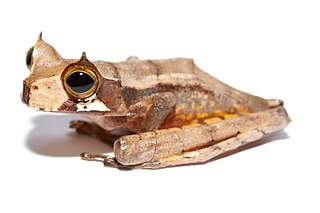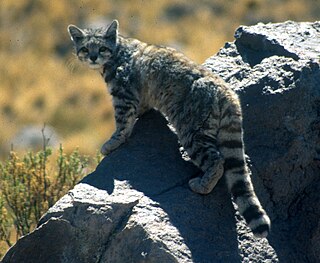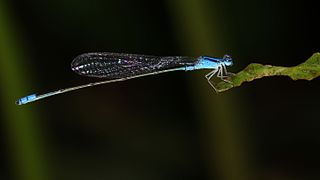
Gastrotheca is a genus of frogs in the family Hemiphractidae. They are found in Central America south of Costa Rica and in South America. Most species occur in the American Cordillera from southern Costa Rica to north-western Argentina. This genus makes up the bulk of marsupial frog diversity; formerly it was placed in the "Leptodactylidae" assemblage.
The year 1624 in music involved some significant events.

Alsophila is a genus of tree ferns in the family Cyatheaceae. It has also been considered to be a section in the subgenus Cyathea of the genus Cyathea.
Gastrotheca rebeccae is a species of frog in the family Hemiphractidae. It is endemic to Peru and known from the eastern slopes of the Cordillera Oriental in the Ayacucho Region, at elevations of 2,440–2,970 m (8,010–9,740 ft) asl. The specific name honours Dr. Rebecca Pyles from the East Tennessee State University.

Dahira is a genus of moths in the family Sphingidae.
As of August 2023, the IUCN Red List of Threatened Species identified 8509 data deficient species in the Chordata phylum.

On 19 August 2018, the IUCN Red List of Threatened Species identified 4584 endangered species, subspecies, stocks and subpopulations.

Dahira rebeccae is a moth of the family Sphingidae. It was described by Willem Hogenes and Colin G. Treadaway in 1999. It is known from the Philippines.

Phytoecia is a genus of longhorn beetles of the subfamily Lamiinae,

Archibasis is a genus of damselflies belonging to the family Coenagrionidae. These damselflies are generally medium-sized with bright colouring. Archibasis occurs in southern Asia, Indonesia, New Guinea and Australia.

Myrmentoma, the cleft-lip carpenter ants, is a subgenus of Camponotus, the carpenter ants. Its Nearctic species nest in galls, branches and stems of plants, under tree bark, in wood and buildings, or soil. Colonies are generally small with a few dozen or a few hundred workers.







